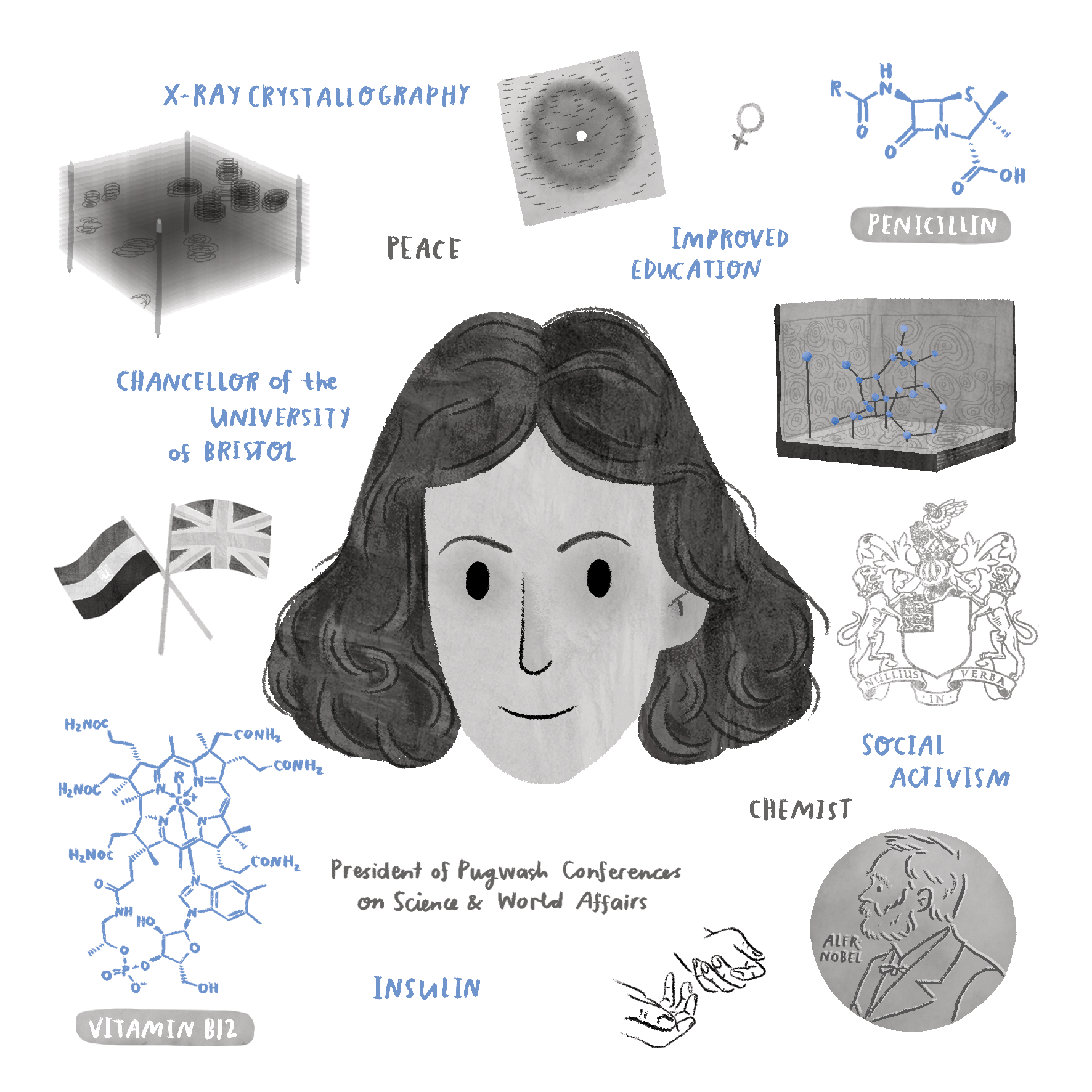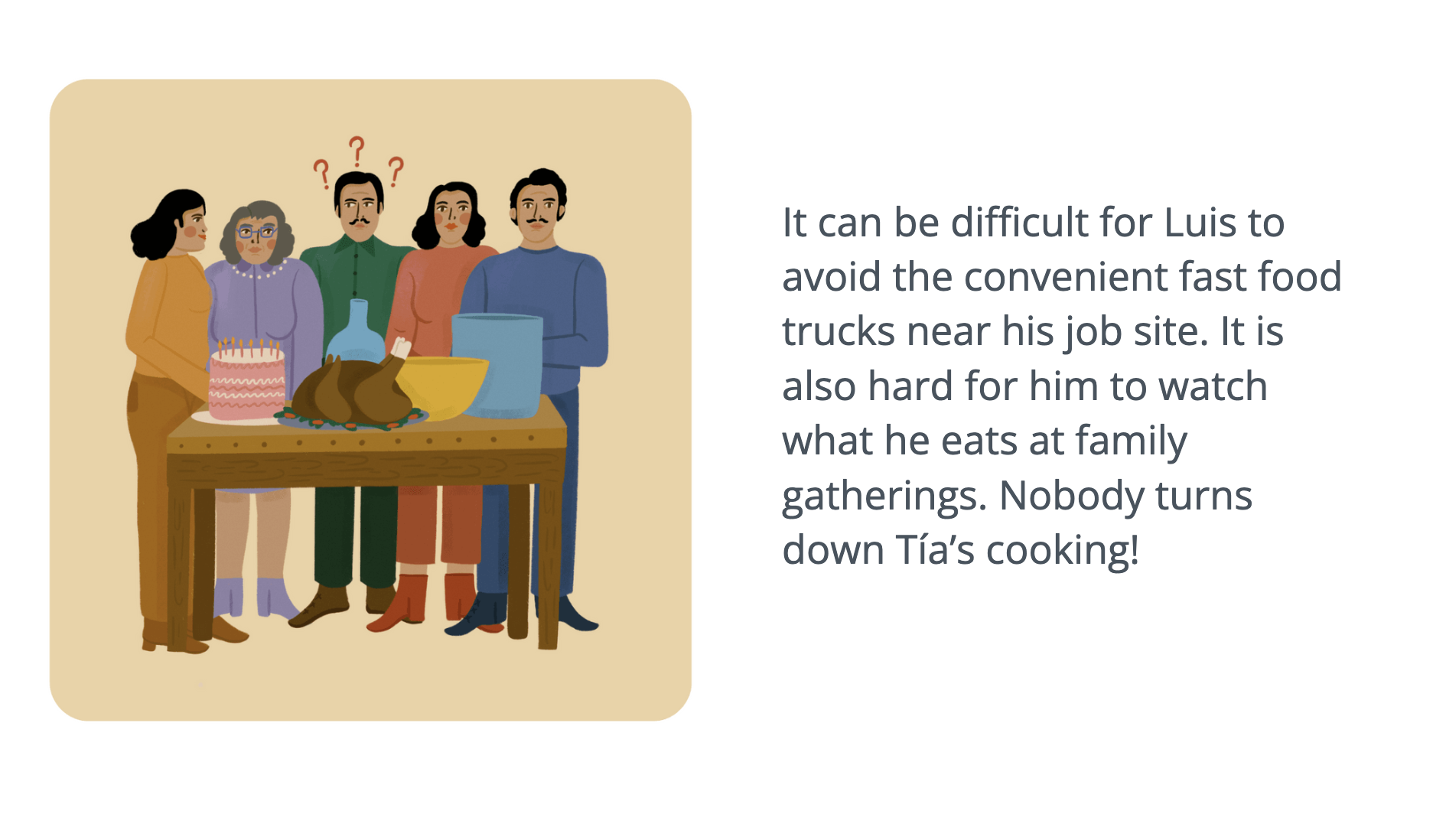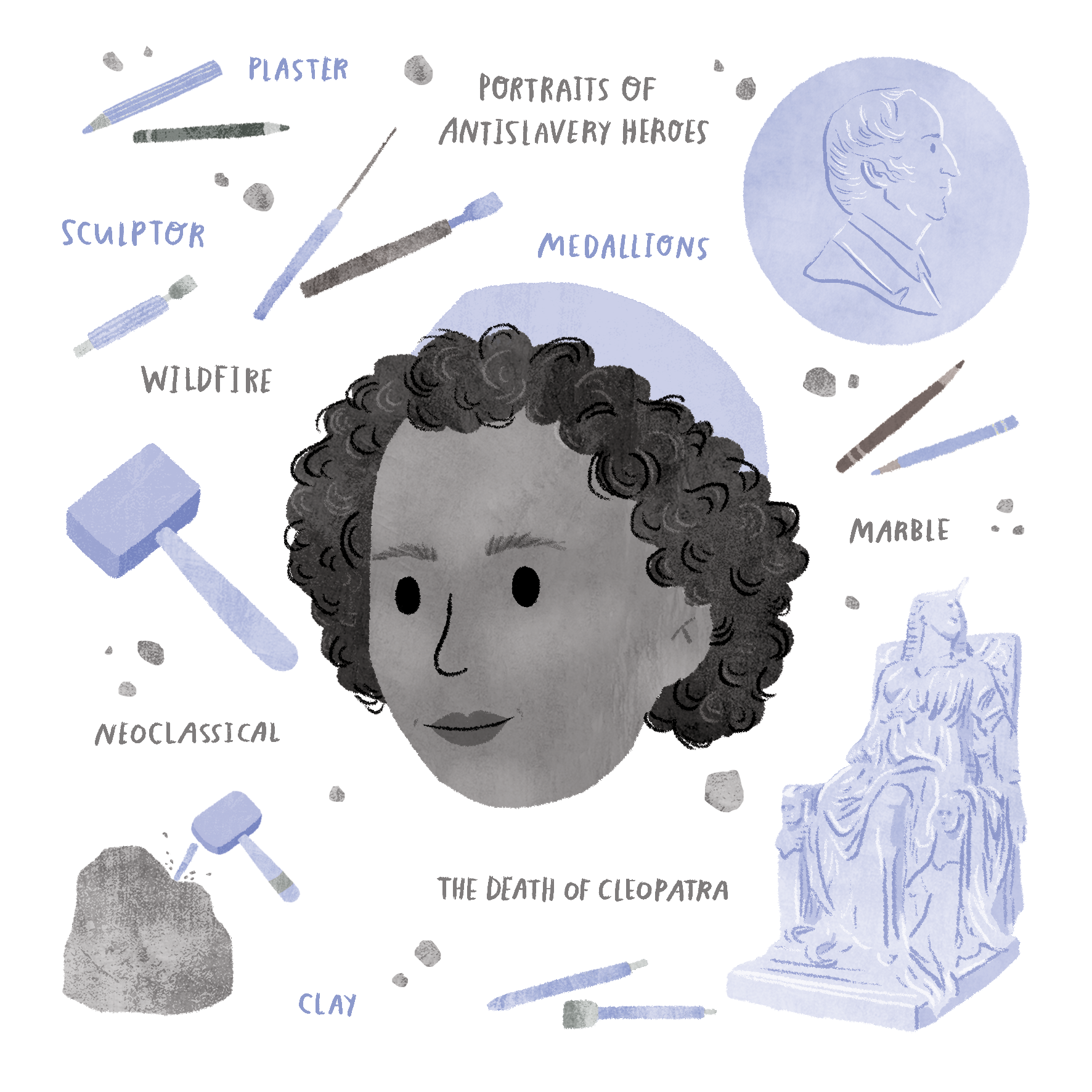
People in STEAM (science, tech, engineering, arts, and math) are blazing trails—both people from history and in the world today. We want more people to know about these people and their excellent but often under-promoted work, including children (and adults!) who might dream of careers in STEAM fields!
That is the goal of our new “living” Historic STEAM Heroes Lifeology card deck!
Each month, we feature a new person from history in this living digital card deck. These people often faced adversity and overcame obstacles to become the STEAM heroes that they are today! Have someone from history that you would like to nominate? Help us curate examples of historic steam heroes from around the world—not just Western culture. You can nominate here.
Keep reading to learn about the woman featured for the month of November!
Dorothy Crowfoot Hodgkin is featured in our Historic STEAM Heroes course.
November 14th is World Diabetes Day. This day marks the largest diabetes awareness campaign, reaching a vast global audience. To help spread the word about diabetes, we wanted to feature someone whose contributions to chemistry helped improve the treatment of the disease.
Dorothy Hodgkin used X-ray crystallography to solve the structure of important biochemicals such as penicillin and vitamin B12 as well as insulin. Insulin is a hormone produced by the pancreas that allows glucose (a type of sugar) to enter the body’s cells to provide energy, regulating the amount of glucose found in the blood. Diabetes is caused by a lack of insulin or the inability of the body to properly use the insulin it produces. Her contributions greatly improved the understanding of how insulin and these other molecules work in living systems and substantially advanced X-ray crystallography technology.
Dorothy Crowfoot Hodgkin, Ph.D.
(May 12, 1910, Egypt to July 29, 1994, United Kingdom)
From a young age, Hodgkin was enamored by crystals and already had the mind of a scientist as she analyzed the shape and other characteristics of the things she found in her surroundings. When she was in her mid-teens, she was gifted a book about using X-rays to analyze crystals, which helped continue to pave the path to her eventual career in X-ray crystallography
Hodgkin attended Somerville College, Oxford where she studied physics and chemistry. It was here that she finally did more than just read about X-ray crystallography—it became the star of her fourth-year research project. X-ray crystallography is a field of science concerned with the ability to “see” the structure of matter at an atomic level using a crystallized sample of a molecule and an x-ray instrument. At the time, it was relatively new technology that allowed for plentiful research opportunities for Hodgkin as she moved forward in her career.
Next, she went to Cambridge where she received her Ph.D. in 1937. She successfully used X-ray crystallography to help determine the structure of several organic molecules during her time there, which was a big deal because the pioneer of the field (and author of the book she received in her teens) had primarily worked with inorganic molecules. She and her mentor, J.D. Bernal, were the first to use X-ray crystallography to determine the structure of biochemical substances, significantly advancing the field.
After graduation, she returned to Oxford where she began what she described as an “impossibly complex” quest to solve the structure of insulin. And she was right! It took her three decades, and solving several structures in between, to eventually solve the structure of insulin. She even received the Nobel Prize in Chemistry in 1964, about five years before ever solving the structure of insulin.
First, she paused her study of insulin during the time of World War II where a more urgent task was at hand: solving the structure of penicillin. Containing 17 atoms, Hodgkin mapped penicillin in only four years. By 1945, thanks to Hodgkin, the drug was easier to manufacture at a time when it was desperately needed. Then in 1947, she was elected as a Fellow of the Royal Society, becoming one of the first women to join the prestigious society.
Next, she solved the structure of vitamin B12, which contains 181 atoms, in 1954—this time in eight years. Hodgkin received the Nobel Prize in Chemistry 1964 “for her determinations by X-ray techniques of the structures of important biochemical substances,” which included penicillin and vitamin B12. Hodgkin was the third woman to ever win the prize in Chemistry and she is the only female British scientist to receive the award to date.
Finally, in 1969, Hodgkin mapped the 788 atoms contained in insulin. Thirty four years had passed since she first started studying insulin. Her discovery of the structure of insulin greatly impacted and improved the treatment of diabetes.
Although she was awarded the Nobel Prize before mapping insulin’s structure, her discovery did contribute to several more recognitions and awards including the Copley Medal of the Royal Society and Lomonosov Gold Medal of the Soviet Academy of Sciences as well as being appointed to the Order of Merit.
Overcoming Obstacles
During her Ph.D., Hodgkin began having pain in her hands. Upon a visit to a consultant, she was told she had a hand deformity from swelling in the joints of her hands. She was supposed to rest, but Dorothy was determined to keep working.
At age 28, Hodgkin experienced her first attack of rheumatoid arthritis. She was raising a baby at the time, and she said it was difficult to even get up and get dressed. She saw a specialist and underwent treatment for a few weeks. When she returned, she found that she could no longer use one of the main switches on the X-ray equipment. Determined to not let her condition stand in her way, she had a long lever made for the switch. She continued on.
Hodgkin did not let rheumatoid arthritis hold her back from a lifetime of achievements, both scientific and personal.
Not Just a Scientist
Hodgkin was involved in several humanitarian and activism efforts. She was a lifelong advocate for world peace, campaigning against the Vietnam War and nuclear weapons. In her role as president of the Pugwash Conferences from 1975 to 1988, she fought against weapons of mass destruction in hopes of world peace. She also served as chancellor of Bristol University from 1970 to 1988, fighting for improved education funding and supporting students.
Although a successful scientist, Hodgkin was also a wife and mother. The same year she received her Ph.D., she married Thomas L. Hodgkin. He also worked for Oxford University as a historian. Together, they raised three children.
Read more about Dorothy Hodgkin:
The Royal Society. Dorothy Hodgkin FRS. [Link]
San Diego Supercomputer Center. A Founder of Protein Crystallography. [Link]
Science History Institute. Dorothy Crowfoot Hodgkin. [Link]
The Nobel Prize. Dorothy Crowfoot Hodgkin. [Link]
Bodleian Libraries. (2013, Nov 18) Great Medical Discoveries: Dorothy Hodgkin and the Structure of Penicillin. [Video]. YouTube.
Biochemical Society. Developing an Early Interest in Science – Dorothy Hodgkin. [Video]. Web of Stories.






